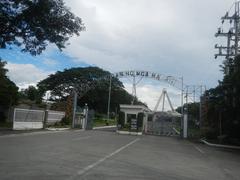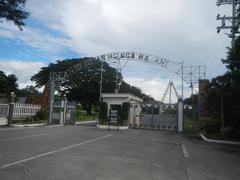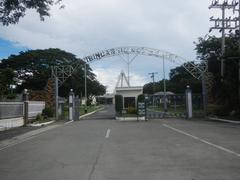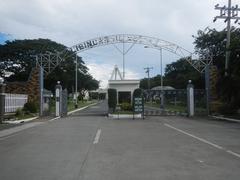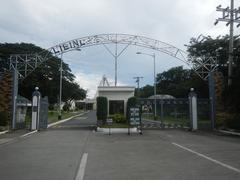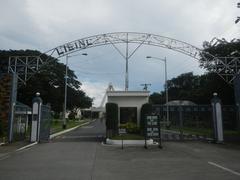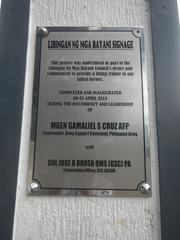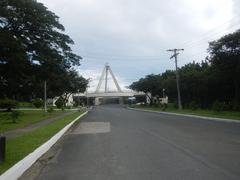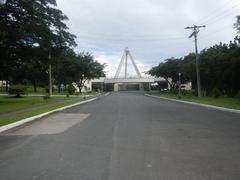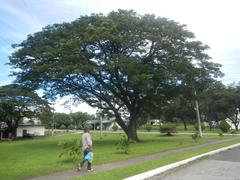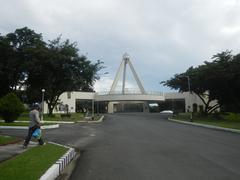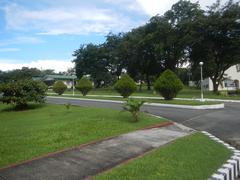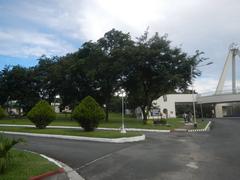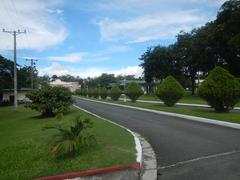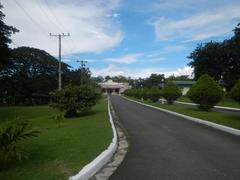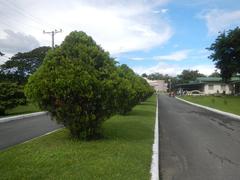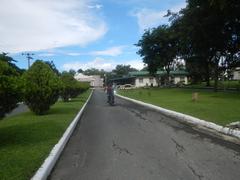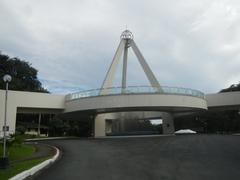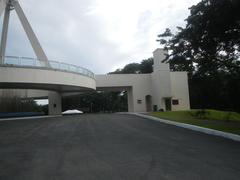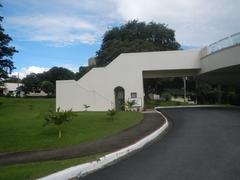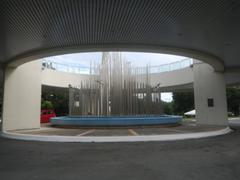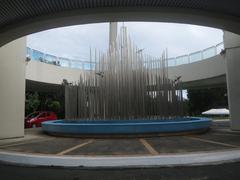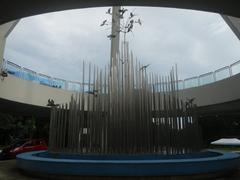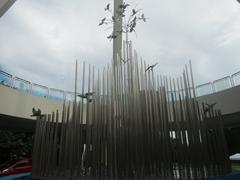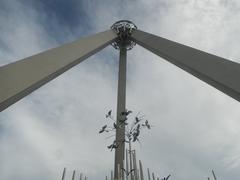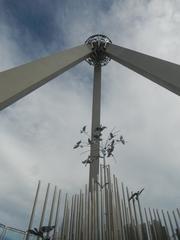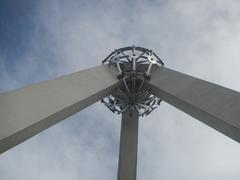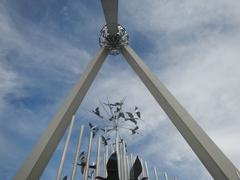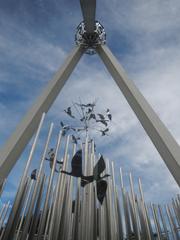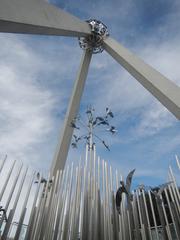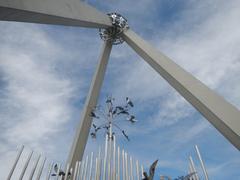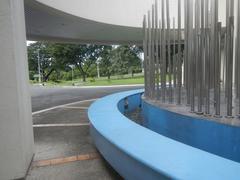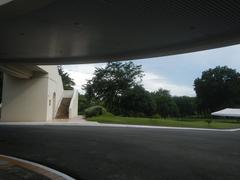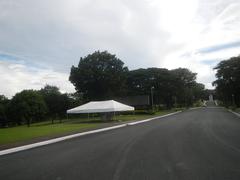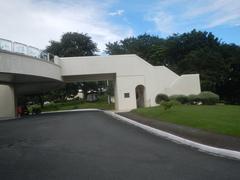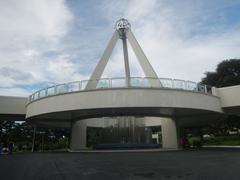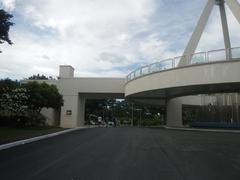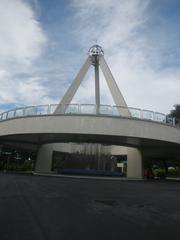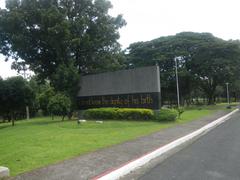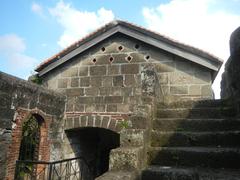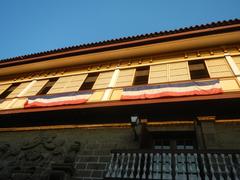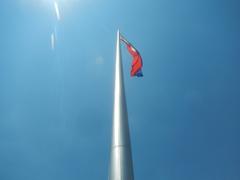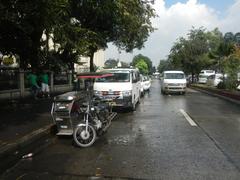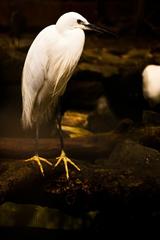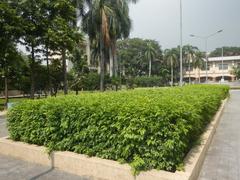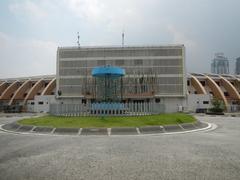
Libingan ng mga Bayani: Visiting Hours, Tickets, and Historical Significance in Taguig, Philippines
Date: 14/06/2025
Introduction
Libingan ng mga Bayani (LNMB), meaning “Cemetery of Heroes,” is a revered national cemetery situated in Fort Bonifacio, Taguig City, Metro Manila. Established in 1947 and spanning over 100 hectares, it serves as the final resting place for Filipino soldiers, presidents, national artists, scientists, and other distinguished individuals who contributed greatly to the nation. Its dignified grounds and monuments are not only a place of remembrance but also a symbol of national pride and a vital part of the Philippines’ cultural heritage.
This comprehensive guide provides detailed information for visitors, including Libingan ng mga Bayani visiting hours, ticketing policies, accessibility, guided tours, notable landmarks, and cultural etiquette. Whether you are a history enthusiast, student, tourist, or a family member paying respects, understanding the cemetery’s historical context will deepen your appreciation of this solemn site.
For verified and up-to-date information, refer to official sources such as the Philippine Veterans Affairs Office and Taguig City Tourism.
Historical Background and Cultural Importance
Origins and Establishment
Founded in May 1947 as the Republic Memorial Cemetery, the site was meant to honor Filipino soldiers who perished during World War II. Its development was inspired by the Manila American Cemetery and Memorial, recognizing the heroism of countless Filipino servicemen.
Renaming and Expansion of Purpose
On October 27, 1954, President Ramon Magsaysay officially renamed the site as Libingan ng mga Bayani, expanding its purpose beyond military personnel to include statesmen, martyrs, and other national heroes. Subsequent policies broadened eligibility to include national artists, scientists, and other distinguished Filipinos, reflecting the nation’s respect for various forms of service.
Evolution and Layout
Currently, the cemetery covers approximately 103 hectares (with 142 hectares reserved for future expansion), featuring distinct sections for presidents, military personnel, national artists, scientists, and other dignitaries. Landmarks such as the Tomb of the Unknown Soldier and the Bulwagan ng mga Bayani (Hall of Heroes) serve as focal points for national ceremonies and remembrance.
Symbolism and National Significance
Libingan ng mga Bayani embodies unity, patriotism, and remembrance. It hosts major commemorative events, especially on National Heroes Day, Independence Day, and All Saints’ Day. The site’s dignified design and solemn atmosphere reflect the Filipino values of respect and gratitude for those who served the country.
Visitor Information: Hours, Tickets, and Guidelines
Visiting Hours
- Standard Hours: Open daily from 7:00 AM to 5:00 PM.
- Special Events: Hours may be extended or adjusted during holidays and national ceremonies. Always check official announcements before your visit.
Tickets and Admission
- Entry: Free of charge; no tickets are required.
- Parking: Complimentary parking is available near the main entrance, but space may be limited during events.
Accessibility
- Transportation: Easily accessible via major roads in Metro Manila. Public transport options include jeepneys, buses, taxis, and ride-hailing services.
- Wheelchair Access: Most main pathways are wheelchair-friendly, although some areas may require assistance due to uneven terrain.
Guided Tours and Educational Visits
- Arrangements: Guided tours can be organized through the Philippine Veterans Affairs Office or the cemetery administration. These tours provide historical context and highlight significant monuments and individuals.
- Educational Groups: Schools and organizations are encouraged to coordinate visits in advance, especially during peak periods.
What to See: Notable Monuments and Sections
- Tomb of the Unknown Soldier: Central monument dedicated to unidentified soldiers, flanked by pillars representing the Army, Navy, and Air Force.
- Presidential Graves: Burial sites of Presidents Carlos P. Garcia, Diosdado Macapagal, Ferdinand Marcos, and others.
- National Artists and Scientists Section: Graves of distinguished individuals in culture and science.
- Memorial Walls and Markers: Commemorate fallen soldiers from various conflicts, including World War II, the Korean War, and peacekeeping missions.
- Rows of White Crosses: A visual testament to the scale of sacrifice.
- Peaceful Gardens and Tree-Lined Avenues: Offer quiet spaces for reflection.
Photography for personal use is permitted, but professional and drone photography require prior authorization.
Nearby Attractions in Taguig City
- Philippine Army Museum: Military artifacts and exhibits.
- Manila American Cemetery: Adjacent memorial for American and Allied soldiers.
- Fort Bonifacio: Urban center with parks, shopping, and dining.
- The Mind Museum: Interactive science exhibits suitable for families and students.
Practical Tips for Visitors
- Best Time to Visit: Early mornings or late afternoons to avoid midday heat; weekdays are quieter.
- Dress Code: Modest, respectful attire is expected.
- Essentials: Bring sun protection, water, and comfortable shoes.
- Conduct: Maintain silence and decorum; avoid loud music or disruptive activities.
- Offerings: Flowers and candles are allowed. Please dispose of waste responsibly.
Frequently Asked Questions (FAQ)
Q: What are Libingan ng mga Bayani’s visiting hours?
A: Generally open daily from 7:00 AM to 5:00 PM. Hours may change on holidays.
Q: Are tickets or entrance fees required?
A: No. Entry and parking are free.
Q: Is the cemetery accessible for those with disabilities?
A: Most main paths are wheelchair-accessible, but some areas may require assistance.
Q: Can I arrange a guided tour?
A: Yes, through the Philippine Veterans Affairs Office or authorized tour groups.
Q: Are there special events or ceremonies held at LNMB?
A: Yes, especially on National Heroes Day, Independence Day, and All Saints’ Day.
Q: What are the rules for photography?
A: Personal photography is allowed. Drones and professional shoots require permits.
Visual Resources
- For virtual tours and interactive maps, visit the Philippine Veterans Affairs Office or Taguig City Tourism.
Cultural Etiquette and Visitor Conduct
- Remain respectful and quiet throughout the grounds.
- Supervise children and avoid recreational activities.
- Do not pick flowers or disturb wildlife.
- Stand and observe moments of silence during ceremonies.
- Seek permission before photographing others or ongoing events.
Staying Updated and Further Resources
For the latest announcements, event schedules, and digital resources:
To enhance your visit, consider downloading the Audiala app for guided audio tours, real-time updates, and related heritage articles.
Summary and Final Tips
Libingan ng mga Bayani is more than a cemetery; it is a living monument to the Philippines’ past and present heroes. Its serene landscape and national monuments invite visitors to reflect on the sacrifices made for the country’s freedom and progress. Free admission, accessible visiting hours, and guided tours ensure that everyone has the opportunity to honor the heroes interred here.
Respectful conduct is essential, as LNMB remains a sacred space of remembrance and national pride. To maximize your visit, plan ahead, observe cultural etiquette, and take time to explore the nearby historical and cultural sites within Taguig City.
For official updates, event information, and virtual resources, consult the links below.



